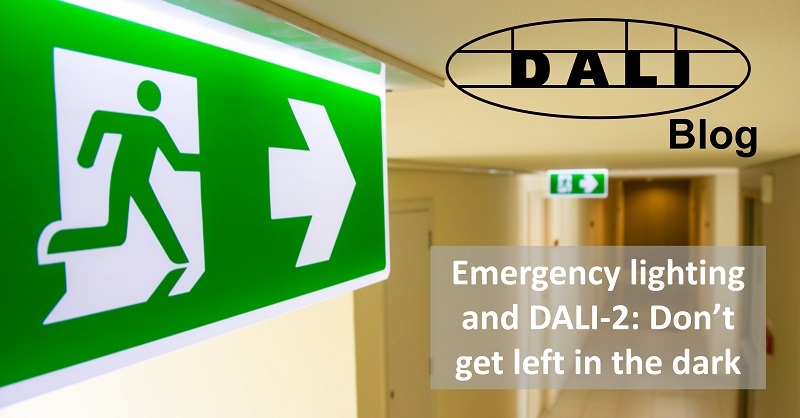




April 4, 2022
 Even though emergency lighting is a legal requirement, it’s often a poorly conceived afterthought in many projects due to time and/or cost constraints. This is clearly a mistake, as well-executed emergency lighting can provide a myriad of benefits to building operators, helping them to save on maintenance costs, boost efficiency and, most importantly of all, keep buildings and their occupants safe.
Even though emergency lighting is a legal requirement, it’s often a poorly conceived afterthought in many projects due to time and/or cost constraints. This is clearly a mistake, as well-executed emergency lighting can provide a myriad of benefits to building operators, helping them to save on maintenance costs, boost efficiency and, most importantly of all, keep buildings and their occupants safe.
We all know that emergency lighting provides light when the mains supply fails. The system constantly monitors the mains supply, and regular testing is essential to ensure safe and reliable operation when called upon. Failure to monitor and maintain emergency lighting could have serious consequences, and the benefits of using a reliable lighting-control system are clear. Automated commissioning, testing and monitoring helps eliminate human error and provides detailed records.
One step ahead
The use of DALI emergency lighting is well-established globally as a reliable and robust solution that meets the safety-critical requirements of this sector [1]. Recently, the DALI Alliance extended our DALI-2 certification program to include DALI Emergency, which further extends the interoperability of lighting-control devices [2]. It also facilitates integration with building management systems, which can access DALI control and querying capabilities, including automated testing and reporting.
DALI enables the automation of tests for self-contained emergency lighting. “Self-contained” means that the battery – which provides power during an emergency – is inside, or placed next to, the luminaire. Emergency control gear must implement both a function test and a duration test. The function test is a quick test (typically 30 seconds) of the battery, charging circuit, driver/relay and lamp, while the duration test ensures the battery will be able to operate the lamp for the full rated duration (1 or 3 hours, for example). DALI emergency systems support the requirements of IEC 62034:2012, the automatic test standard for battery-powered emergency escape lighting, which requires a monthly function test to monitor the health of the fitting, as well as an annual full rated duration test.
DALI-2 certification of self-contained emergency control gear requires the product to successfully pass a rigorous and comprehensive set of tests based on Part 202 of IEC 62386. Here at the DALI Alliance, we independently verify the test results before listing each DALI-2 certified product in our product database, providing public traceability. The first certified DALI-2 Emergency LED drivers (which are entitled to use the DALI-2 logo) are now listed in the database [3, 4].
Notably, DALI-2 LED drivers implementing Part 202 can also optionally support luminaire, energy and diagnostics data (specified in Parts 251-253). One benefit, for example, is that Part 252 allows the emergency control gear’s energy usage to be monitored and reported. Furthermore, the ongoing development of Zigbee to DALI Gateways, Bluetooth mesh to DALI Gateways and ‘DALI+ with Thread’ certification opens the possibility of future standardisation for the wireless control of DALI emergency lighting.
Smart emergency
Ultimately, the introduction of DALI-2 Emergency brings updates to the protocol that remain perfectly aligned with the safety-critical requirements of emergency lighting. It’s a great step forward in the adoption of DALI-2 as the protocol of choice for ‘smart emergency’ and even smarter buildings. Industry can now have a great deal of confidence in the interoperability of certified DALI-2 devices, which is vital as there’s more focus than ever on making sure that emergency lighting systems meet very high standards.
Put simply, DALI-2 Emergency raises the bar for emergency lighting systems, giving users the confidence necessary to know that products will work together seamlessly today, tomorrow and for the lifetime of the system.
References
[1] DALI Blog: Emergency lighting controlled by DALI that’s dependable and robust (August 2020)
[2] Press Release: DALI-2 Emergency lighting control strengthens interoperability (September 2021)
[3] News: First DALI-2 certification of self-contained emergency devices (Feb 2022)
[4] Product database showing control gear for self-contained emergency lighting
[5] DALI website: DALI Emergency page
► Sign up to join our mailing list and receive our newsletter
► Follow the DALI Alliance on LinkedIn or join the LinkedIn DALI Group